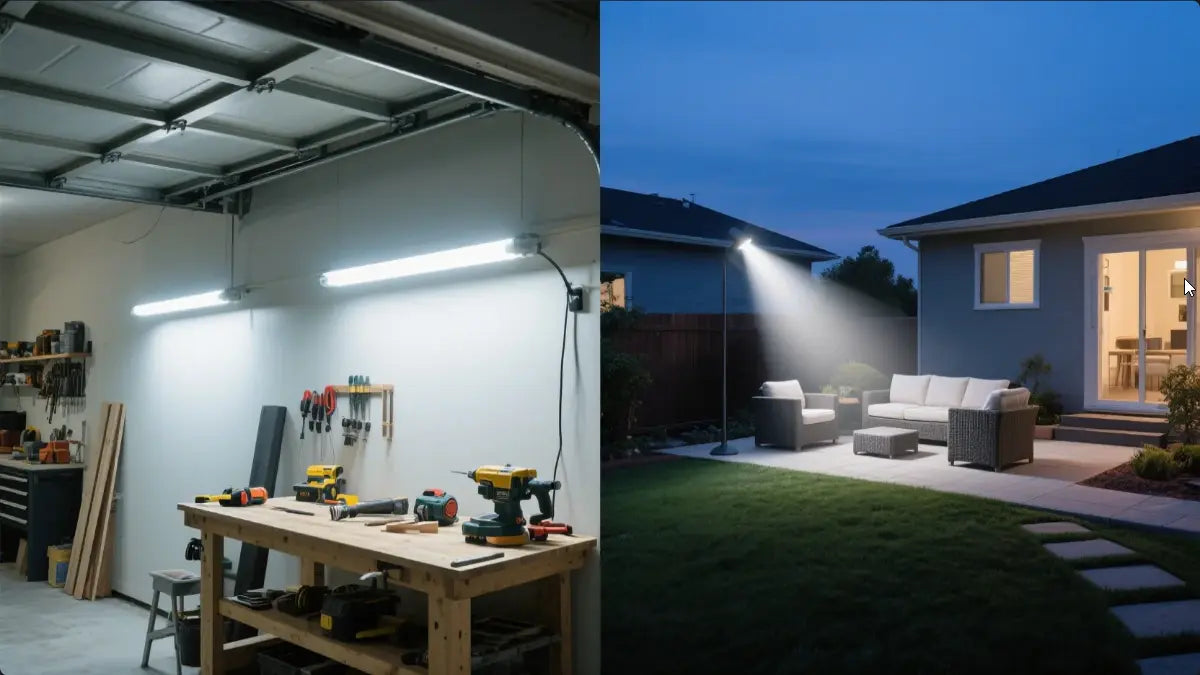How Bright is 5000 Lumens?
Understanding Lumens
Lumens quantify visible light output. Unlike watts, which measure energy consumption, lumens focus on brightness. For context:
- A 100-watt bulb yields around 1600 lumens.
- 5000 lumens is equivalent to the output of multiple high-powered bulbs, making it ideal for illuminating large spaces or projecting clear images.
How Bright is 5000 Lumens?
To grasp the brightness of 5000 lumens:
- Indoor Use: 5000 lumens is extremely bright for home lighting. A typical living room requires 1000–2000 lumens, so 5000 lumens is more suited for garages, workshops, or commercial spaces.
- Outdoor Use: For outdoor settings, 5000 lumens can light up a large backyard, driveway, or worksite, comparable to high-end floodlights.
- Comparison: It’s brighter than a car’s high-beam headlights (around 3000 lumens per pair) but less intense than a stadium floodlight (10,000+ lumens).
For specific queries like “is 5000 lumens bright?”—yes, it’s very bright, often requiring eye adjustment in enclosed spaces and capable of illuminating areas up to 1000 square feet or more, depending on beam spread and height.

Common 5000-Lumen Products
A 5000-lumen LED shop light is perfect for illuminating large workspaces like garages or basements. Brands like Farpoint offer models with 5000 lumens, using about 40–50 watts, and are often linkable for scalable lighting.
5000 Lumen Flashlight
A 5000-lumen flashlight or torch, such as those from Fenix or Olight, is a high-performance tool for search-and-rescue, camping, or tactical use. These flashlights can project beams over 1000 feet, but battery life is typically short (1–2 hours on max output). They’re pricier, often costing $100–$200.
5000 Lumen Solar Light
Solar lights with 5000 lumens are used for street or security lighting. However, the highest lumen output for solar lights typically maxes out around 2000–3000 lumens due to solar panel and battery limitations. A 5000-lumen solar light would require a large panel and robust battery, making it less common and more expensive.
Lumens vs. Watts
“How many watts is 5000 lumens?” depends on the light source:
-
LED: 5000 lumens typically requires 40–60 watts (80–100 lumens per watt).
-
Incandescent: Around 400–500 watts (10–15 lumens per watt).
-
Fluorescent: About 100–125 watts (40–50 lumens per watt).
LEDs dominate 5000-lumen products due to their efficiency and low heat output.
Comparisons and Context
- 5400 Lumens: Slightly brighter than 5000 lumens (about 8% more light), often seen in premium shop lights or projectors. The difference is barely noticeable to the human eye.
- 2300 Lumens: About half as bright as 5000 lumens, suitable for smaller spaces or less demanding tasks, like a single-car garage.
- Workshops: A Hyper Tough or Farpoint 5000-lumen work light ensures clear visibility for detailed tasks like woodworking or car repair.
- Security: 5000-lumen floodlights deter intruders and light up large properties.
FAQs
-
How many lumens for an outdoor projector? 3000–5000 lumens is ideal for backyard movie nights, with 5000 lumens handling some ambient light better.
-
Is 5000 lumens too bright? For small rooms, yes—it can cause glare. For large spaces or outdoor use, it’s perfect.
-
How bright is 5500 lumens compared to 5000? The difference is minimal, as human perception of brightness is logarithmic.








Leave a comment
Please note, comments need to be approved before they are published.